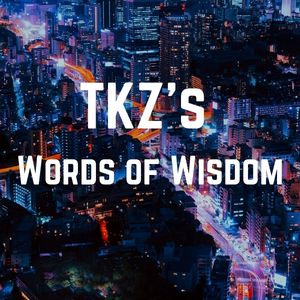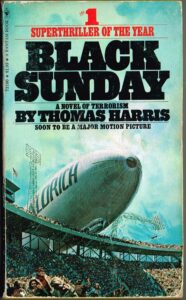
Villains are the catalysts for mysteries and thrillers. Without them, there would be no murder to solve, no threat to stop, no dastardly deed to foil. They test the hero to the utmost, and must be confronted in one form or another by story’s end. Furthermore, not only are villains essential to mysteries and thrillers, they are also vital in many other genres ranging from fantasy and science fiction, to action, adventure, westerns and others.
Today Words of Wisdom returns to this evergreen topic once more with three insightful excerpts from the KZB archives. Elaine Viets offers advice on creating likeable villains. Becca Puglisi discusses villain backstories and their connection with the hero. Finally, Debbie Burke, who just published an insightful book on villains, shares wisdom on the villain’s story and behaviors.
The original three posts are all well-worth reading in full. As always, each excerpt is date-linked to the full version.

Make your villains smart. Or at least crafty.
Tiffany quickly becomes the fourth wife of rich old Cole Osborne and they live in luxury in Fort Lauderdale.
“I never went to college, but I wasn’t stupid,” Tiffany said. “I knew now that Cole had tied the knot with me, my struggle had just begun. Cole was very, very classy, and I had to fit in with his rich friends.”
Make your villains self-aware.
The Joni Mitchell song was Tiffany’s anthem, and she recognized herself in the lyrics of “Dog Eat Dog.” Especially the part about slaves. Some were well-treated . . .
And some like poor beasts
Are burdened down to breaking
Tiffany said, “This was a dog eat dog world – more so than the trailer park where I used to live. I was a well-treated slave, and I’d sold myself into slavery, but I knew that.”
Our villain has knows she’s living in comfort, but she can’t get comfortable.
“One misstep, and I’d be one of those poor beasts, working again at the local hardware store or greeting people at Walmart. I had a prenup that would give me a measly hundred thousand dollars if we divorced, but if I could hang on until Cole died, I’d get half his fortune.”
Make your villains work for their success. That way, readers can root for them.
Cindy knew she’s landed her pretty derriere in a tub of butter, but she knew her work has just started. Among other things, Cindy changed her name to a classier “Tish.”
She also “made friends with his housekeeper, Mrs. Anderson. She’d been with him for twenty years and three wives. I slipped her a little extra out of my mad money account that Cole gave me, and Mrs. A told me where to shop on Las Olas, the local Rodeo Drive, and which saleswoman to make an appointment with. She also advised me to ditch my long fake nails and get a nice, refined French manicure, then sent me to a salon where I had my long hair tamed into fashionable waves and the color became ‘not so blonde’ as the tactful stylist said.”
Make your villains aware of the stakes if they fail.
Now readers have more reasons to root for them.
“As I got into my mid-twenties, I had to work hard to keep my girlish figure,” Tiffany said. “My trainer was worse than a drill sergeant, and I endured endless runs on the beach. Awful as it was, it beat standing on my feet all day on a concrete floor, running a cranky cash register for nine dollars an hour.”
Create a conflict – and an even worse villain.
Tiffany says, “I thought I could sail smoothly into Cole’s sunset years and collect the cash when he went to his reward. But then that damn preacher showed up. The smarmy Reverend Joseph Starr, mega-millionaire pastor of Starr in the Heavens.”
As much as we may dislike money-hungry Tiffany, the bloodsucking TV preacher is even worse. He plays on Cole’s fear of death and walks off with a check for a million dollars on his first visit – and the Reverend has his sights set on more.
“Starr would work on Cole’s guilt and milk him for every dollar – my husband was one big cash cow,” the practical Tiffany said.
Now that her husband was in the hospital on life support, Tiffany has to find a way to kill her husband and put the blame on the Reverend Starr.
Does Tiffany succeed? Or does the Reverend Starr walk off with the money? You’ll have to read “Dog Eat Dog” to find out – and see if I made you root for her.
Tell us, TKZers. How do you humanize your villains?
Elaine Viets—June 10, 2021
THEY HAVE A BACKSTORY (AND YOU KNOW WHAT IT IS)
Authors know how important it is to dig into their protagonist’s backstory and have a strong grasp of how it has impacted that character. Yet one of the biggest mistakes we make with villains is not giving them their own origin story. A character who is evil with no real reason behind their actions or motivations isn’t realistic, making them stereotypical and a bit…meh.
To avoid this trap, know your villain’s beginnings. Why are they the way they are? What trauma, genetics, or negative influencers have molded them into their current state? Why are they pursuing their goal—what basic human need is lacking that achieving the goal will satisfy? The planning and research for this kind of character is significant, but it will pay off in the form of a memorable and one-of-a-kind villain who will give your hero a run for his money and intrigue readers.
THEY SHARE A CONNECTION WITH THE PROTAGONIST
In real life, we have many adversaries. Some of them are distant—the offensive driver on the highway or that self-serving, flip-flopping politician you foolishly voted for. Those adversaries can create problems for us, but the ones that do the most damage—the ones we find hardest to confront—are those we share a connection with. Parents, siblings, exes, neighbors we see every day, competitors we both admire and envy, people we don’t like who are similar to us in some way…conflicts with these people are complicated because of the emotions they stir up.
The same is true for our protagonists. The most meaningful clashes will be with the people they know. Use this to your advantage. Bring the villain in close and make things personal by engineering a connection between the two characters. Here are a few options for you to work with.
- Give Them a Shared History. The more history the two have, the more emotion will be involved. Guilt, rage, grief, fear, jealousy, regret, desire—strong feelings like these will add sparks to their interactions. They’ll cloud the protagonist’s judgment and increase the chances their villain will gain an edge.
- Make Them Reflections of Each Other. What happens when the protagonist sees him or herself in the villain? A seed of empathy forms. The hero feels a connection with the person they have to destroy, which complicates things immensely. Personality traits, flaws, vulnerabilities, wounding events, needs and desires—all of these (and more) can be used to forge a bond that will add complexity and depth to this important relationship.
- Give Them a Shared Goal. When your hero and your villain are pursuing the same objective, it accomplishes a number of good things. First, it ensures that only one of them can be the victor, pitting them against each other. But they’re also more likely to understand one another. They’ll have different reasons and methods of chasing the dream, but the shared goal can create an emotional connection.
Becca Puglisi—September 5, 2022
The villain’s story is thus one of declining power while the hero’s story is one of rising power…In defeat, the villain’s mastery is handed over to the hero. The villain’s deficiencies of character have been exposed; the hero’s deficiencies have been corrected. The two journeys, one the inverse of the other, are completed.
In another article, Scott traces the stages that cause some people to become villains, both in real life and in fiction:
- The pre-villain is an ordinary person living in an ordinary world that is safe and familiar.
- Something happens that hurls this ordinary person into the “special world” that is dangerous and unfamiliar.
- Often this new dangerous world is the world of abuse, with the ordinary person at the receiving end of emotional or physical abuse.
- Typically, the abuser is a parent, but sometimes another authority figure, peers, or harsh social conditions damage this ordinary person.
- The ordinary person suffers psychological harm that can assume the form of narcissism, psychopathy, depression, or schizoaffective disorders.
- This mental illness distorts the ordinary person’s views of themselves and the world, often producing an extreme self-narcissism and/or collective narcissism of their community or nation.
- The ordinary person remains unaware of their skewed perception of reality and is never able to acknowledge their damaged state nor their need for psychological and/or spiritual help.
- As a result of their untreated trauma, the villain undergoes terrible suffering, often in private, but is unable to learn or grow from it. Their deep fears and sadness transform into anger.
Okay, that covers the villain’s backstory and motivations but…
What about mysteries where the villain is hidden until the end? How does a writer handle the origin story and motivations when the villain’s point of view is never shown?
We’ve all watched films with the tired old trope where the hero is captured and tied to a chair. Then, because the writer couldn’t think of a less clumsy device, the villain bares their soul to the hero, revealing they were driven to exterminate humanity because they’d been potty-trained at gunpoint.
To avoid that pitfall, Chris Winkle of Mythcreants.com offers these suggestions:
The most important method of showing your villain’s character arc – or any character arc – is demonstrating a change in behavior. If you keep their arc simple enough, that could be all you need. The basic unit of changing behavior would look like this:
-
- The villain shows a clear pattern of behavior.
- An event occurs that would reasonably impact the villain.
- The villain shows a different pattern of behavior.
Chris outlines several options for the unseen villain’s character arc:
Gain/Loss:
“The villain gains and/or loses something they care deeply about, and that drives their character change. Usually what they gain or lose is a person they love, but it can be anything as long as you can show the audience why it’s so important.”
Obsession:
“This is a villain that changes their motives during the story because they acquire a new obsession or goal. Often that obsession is the main character, but it also might be a shiny new superpower.”
Revelation:
“This is a great arc for villains who think they’re doing the right thing and consider all the harm they cause justified. In this arc, they have a revelation that challenges this belief, forcing them to adapt.”
Chris’s summary:
If you want a sympathetic villain and you can afford to give them their own viewpoint, that’s great. Give them a deep arc your audience will remember.
Debbie Burke—September 13, 2022
***
- Is it important to you for villains to be likeable? If so, how do you build that likeability?
- How much do you consider your villain’s backstory, and also any connection with your hero?
- What do you think about the advice Debbie shared about the stages of becoming a villain and showing their character arc?






